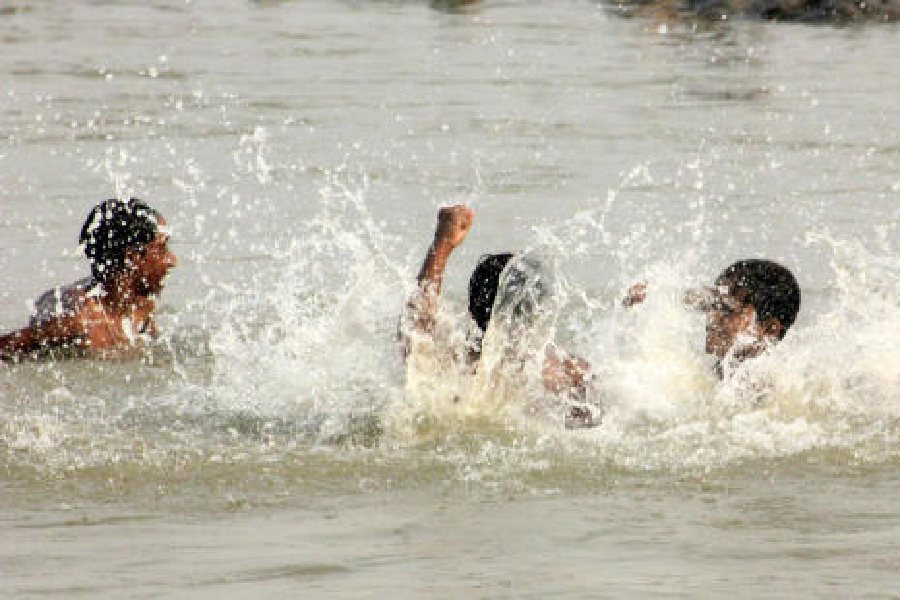Most parts of north Bengal, including some hilly areas, are currently experiencing heat-wave-like conditions with the mercury soaring above 40°C in the plains and hovering above 30°C in the hills.
Weather experts have hinted that the southwest monsoon, likely to hit the region in another three-four days, will bring some relief.
While people in the plains are facing extreme heat, the chill feel in many parts of the hills, which is the main tourist attraction, is absent. The heat has also impacted the tea industry. The power department is grappling with overload in transformers and more demand for power.
The Telegraph underscores some of its implications of the current swelter season
Mercury reigns
Sources at the Indian Meteorological Department define a heat-wave-like condition in north Bengal plains when the maximum temperature is 40°C or more and in the hills when it is 30°C or more.
On Wednesday, the maximum temperature in Bagdogra was 41.9°C, the second highest in Bengal after Purulia at 42.3°C. In the hills, the maximum temperature in Kalimpong was 29°C.
A weather expert said Sikkim faced the same problem. “Barring Gangtok, the maximum (day) temperature in most towns was 30°C or more. It was 36.5°C in Mazitar (Pakyong district). There is no respite from heat in the hills from dawn to dusk. This is rare,” he said.
Tourists vexed
Many tourists visiting the hills for respite from the heat are vexed as it is cool only in the late evening hours.
“Travel operators have received a number of calls from tourists in Gangtok on why there is no ceiling fan in their hotel room. In Kalimpong, ACs and fans are used regularly. We fear that next time tourists who want to escape from heat won’t choose this region,” said Tanmoy Goswami, who runs a travel company in Siliguri.
Met experts however hope that the southwest monsoon, which has reached Kerala and is likely to hit central India and northeast in another 48 hours, will bring some rain in north Bengal.
Tea industry droops
Scorching sun and insufficient rain have lowered the yield of tea bushes, especially in the plains. Pest attacks have been reported from many tea gardens of the Terai and the Dooars.
“Since the start of summer, there is a shortage in rainfall which has lowered the yield. In north Bengal, there is a shortfall of around 3 million kg in the month of April compared to the corresponding month last year. The plantations immediately need rainfall,” said Prabir Bhattacharjee, secretary general of the Tea Association of India.
Heat and long exposure to the sun are turning tea leaves yellow, said some small tea growers. Added to it are reports of pest attacks. “If such weather conditions persist, the industry will end up with lower production in the current quarter,” said Bijoygopal Chakraborty, president of the Confederation of Indian Small Tea Growers’ Associations.
Power posers
The rise in temperature has also led to an increase in the demand for power, particularly in the evenings. Over the past few days, most parts of north Bengal have witnessed recurring power cuts because of a steep surge in the demand for power.
The heat has prompted hundreds of people to swarm in shops of electronic goods to buy air-conditioners and fans. This is also a fresh poser for the power department.
An official of West Bengal State Electricity Distribution Company Limited said people are installing ACs at home without informing them.
“When they are switching on the ACs, there is an overload on the local transformer as we are not aware of the additional requirement in the area. As a result, the transformers are getting damaged. We are having to repair them, bearing additional costs,” said Gobinda Talukdar, a regional manager of WBSEDCL posted in Alipurduar.
In Alipurduar, around 40 electrical transformers have got damaged in the past month owing to overloading. Five transformers stopped working only in Alipurduar town during the past 15 days, said sources.
“If a transformer gets damaged, we have to spend around Rs 2 lakh for repair. We have started making public announcements to avert such incidents and to inform consumers that they should let us know if they have installed ACs in their homes,” the official added.










